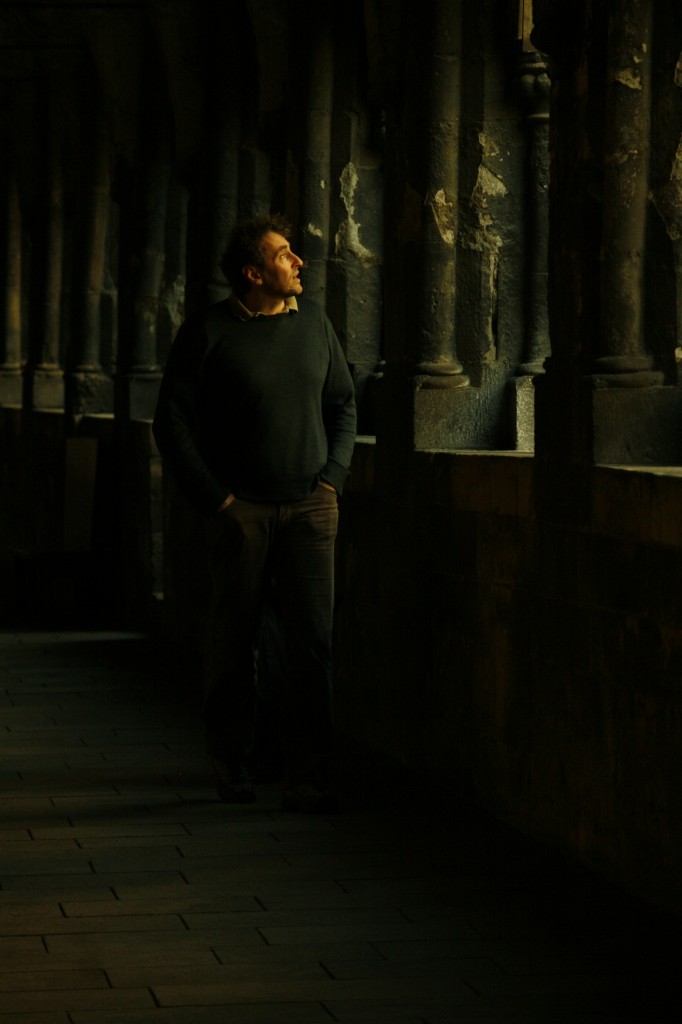
As part of ECLA’s trip to the Harz Mountains students and faculty visited two medieval cathedrals, one at the beginning and one at the end of the trip. They were both built in the same period, and both were in the gothic architectural style. Yet each had particular details which made it unique and which connected it to the history of its home city.
It is possible to identify at quite a distance a cathedral built during the gothic period. The first thing that jumps to the visitors’ eyes is the amazing height to which such a building reaches. The sharp towers seem to attempt to scratch the furthest clouds. These pointed structures recur throughout the structure of the building, both inside and outside. On entering the building, one can’t but feel small facing such architectural magnitude. Large windows cut through the wall every few metres, close to the ceiling of the church. Geoff Lehman, the ECLA faculty member who guided the tour through these medieval buildings, pointed out that the large high-window style was enabled by new technical discoveries and were designed to convey a spiritual message: “having such large windows, so close to one another, is possible because the building is supported not only from the inside, but also with buttresses on the walls outside. Before this, they needed very strong walls and couldn’t structurally afford the delicate window features; otherwise the roof would have fallen in”. The light flooding through these huge openings also had a very strong meaning, intended to represent the light sent by God to the world. The impressive height of the buildings is intended not only as symbol of divine greatness, but as a clear attempt to build a monument reaching toward the heavens.
The first Cathedral we visited was Magdeburg Cathedral, dedicated to St. Maurice and St. Catherine. Otto the Great commissioned this magnificent work in 955. Due to the devastating city fire of 1207, the Cathedral had to be rebuilt, a process that started in 1209 and took 300 years. The completion wasn’t achieved until 1520, and it was with this rebuilding – commissioned by the Archbishop Albrecht II von Kefernburg – that the Cathedral gained its impressive dimensions. Only a wall remains of the original building. Motifs from the natural world are a dominant iconic presence throughout its extent. At the very entrance, the doorknob has the shape of a bird, that, when turned to open the door, leans forward to feed three young pigeons. Most of the intersections of pillars and roof are decorated with ornate leaf patterns that also appear in branches several times across the wall sculptures. Furthermore, the traditional gothic ribs that cross the ceiling bear different nature-inspired figures in the intersections: flowers and wolves, among others. The inside pillars merge into the ceiling with an organic shape, resembling trees. The whole environment leaves the visitor with a peaceful feeling, a very strong idea that the spiritual search and religious life are deeply rooted in nature, man’s most basic habitat.
The Cathedral of Halberstadt, the second one we visited, is dedicated to St. Stephan and St. Sixtus, and was built from 1236 to 1486. The Diocese of Halberstadt, one of the most important of the empire, lasted from 804 until 1648. It is world famous for its treasury: more than 600 works of art from the Middle Ages are still preserved there today. The impressive collection consists of altarpieces, sculptures, manuscripts, furniture, works of bronze and gold, which have been on display in the Halberstadt Cathedral since April 2008.The architecture of this Cathedral is a distinctive example of French Gothic, unlike Magdeburg’s, which appeared more solid and had an austere simplicity. Halberstadt Cathedral is in a certain sense more refined in this way. It also has a very different iconography. Inside, the large windows of the building, unlike Magdeburg’s, serve a didactic function: they are crowded with colorful representations of some of the Bible’s most famous passages. The building itself is much smaller when compared with the Cathedral at Magdeburg, although it too reaches staggering heights. The arcs on the ceiling at Haberstadt were intersected with different coats of arms, probably those belonging to the most important families of the city.
Overall, it was certainly enlightening to visit both Cathedrals and to gain insight into the specific styles of each monument by means of comparison. Even though they were built around the same period, and both are unambiguous examples of the French Gothic architectural style, it suddenly becomes very clear how very different effects can emerge within the same style of devotional aesthetic.
By María Cruz (AY ’10, Argentina)
